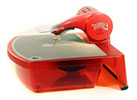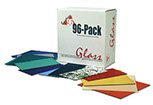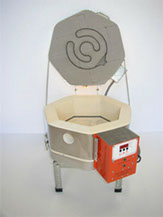
Fused Glass Art by Elyse Ellinger





People often look at my glass work and ask "You made that? How did you do that?" In case you're wondering too, here is a basic explanation of what fused glass is.
I start out with pieces of glass. Iuse different colors as well as clear. The glass comes in sheets, or is chopped up into various coarsenesses (this is called frit), or can take the form of rods, flat noodles or skinny cylindrical stringers (think spaghetti). Glass can be a solid color, a gradient or have a pattern. There is also irridized glass and dichroic glass which has a coating that was developed for the space shuttle. Variety is the spice of life, right?
I take whichever glass I decide to use for my project and cut it to the desired shape and size. There is a variety of class cutting tools and saws for this purpose. Then I assemble the different pieces of class into a composition and it goes into the kiln to be fused. Full fuse happens at around 1460°F, but sometimes different projects need different firing temperatures.
Once the glass is fused and cooled down to room temperature (this takes many hours in a large kiln), I can do many things with it. But if I'm just making a basic dish, for example, I will make sure the edges are. This sometimes requires a good deal of grinding and polishing with a lap wheel or diamond pads. It's hard physical work, but it's worth the time spent making a piece look professional.
Next, the piece goes back in the kiln, this time in a slump mold, so it takes on the shape of the mold. This is how bowls and platters are made. The temperature is lower for this firing - only about 1300°F. Even if I want to keep the piece flat, it often goes back in the kiln for fire polishing to make it smooth and shiny again after grinding.
©Copyright 2014 Light of the Moon Glass